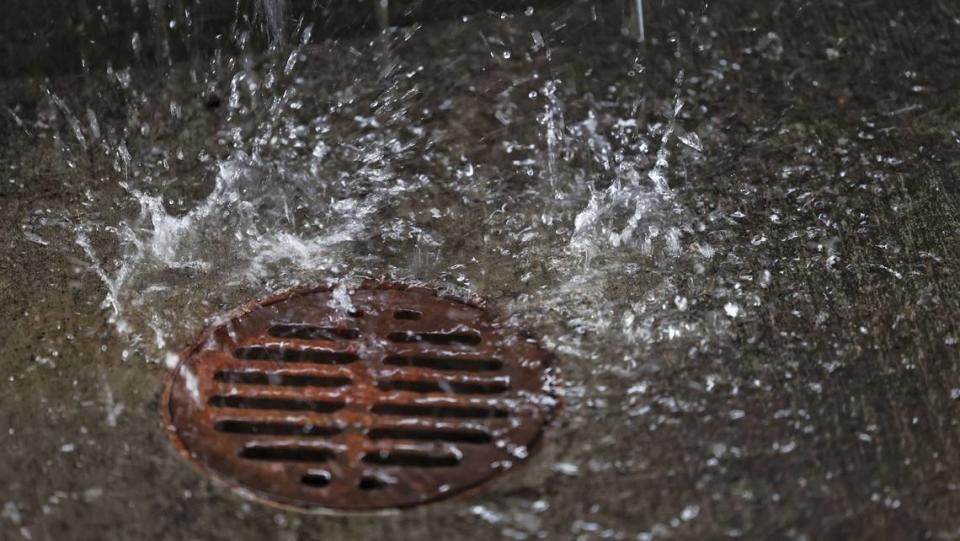Winter rains have returned to SLO County. Here’s how to prepare your home for a flood
Eleven months after the winter 2023 storms battered San Luis Obispo County and displaced some hard-hit residents for months at a time, the rain is back.
This week’s storms brought as much as 3 to 4 inches of rain to many parts of the county and left the region under a flood watch through 4 a.m. Friday due to “a high risk of flooding caused by excessive rainfall.”
That’s left people watching the forecasts and scrambling to protect their properties.
But being prepared for severe weather involves more than just sandbags, experts say.
Here are some tips to ensure your home is equipped to withstand the elements, and why supplemental flood insurance is suggested in case all efforts fail.
Is your SLO County home vulnerable to flooding? Check with FEMA
Flooding is the most common natural disaster in the United States, according to the San Luis Obispo County Office of Emergency Services.
In San Luis Obispo County, flooding is most likely to happen after heavy rainstorms, though the area is also at risk of flooding if a levee or dam breaks, according to the SLO County emergency services website.
The Federal Emergency Management Association has an address tool that can identify if a property is in a floodplain, allowing homeowners and renters to know their level of risk for flood damage. The tool is available at msc.fema.gov/portal/home.
Homeowner’s insurance often does not include flood coverage
FEMA recommends households that are in a floodplain or appear at-risk for flood damage obtain supplemental flood insurance, since most homeowners insurance policies do not cover flood damage.
More information about finding a flood insurance provider is available at www.FloodSmart.gov or by calling the National Flood Insurance Program at 877-336-2627.
“Make sure you’ve got good coverage,” said Wade Vaca, Emergency Services Manager at Central Coast Casualty Restoration. “Talk with your agent or your insurance company if you get it online because usually flood insurance is a supplemental type of insurance.”

How to prepare before a storm in SLO County
The basics of preparing for a flood are similar to preparing for other natural disasters.
Households should have an emergency kit on hand, complete with back-up batteries, flashlights, any medications, water and non-perishable food items, according to the SLO County Office of Emergency Services.
Carbon monoxide and fire alarms should be tested and batteries in these devices should be fully charged.
Vaca recommended homeowners and property managers keep up with routine maintenance to ensure water is diverted away from homes. Sometimes just keeping gutters clear of debris, patching any roof damage and maintaining trees along the property is enough to prevent damage.
Households at high risk for flooding should also consider buying sandbags to protect the perimeter of the home from water intrusion.
In SLO County, sandbags and other flood preparation materials can be purchased at multiple locations, though other places may sell sandbags also. More information about where to purchase sandbags can be found at bit.ly/sloco-sandbags.
More sandbags do not come pre-filled. There are locations throughout SLO County where residents can go to fill sandbags, typically at local fire stations and/or community services district offices.
SLO County: Request maintenance on public places
Vaca recommended residents pay close attention to debris build-up in neighborhood culverts and other city or county-maintained areas.
“Now I know it’s possibly the city or the county’s responsibility, wherever you may be, but maybe take a look at (culverts) and make sure those are cleaned up prior to the storm or make a request to the governing body,” Vaca said. “Like, ‘Hey, man, our drains are pretty clogged up here. We don’t want a repeat of last year’.”

How SLO County can stay safe during storms, household flooding
Pay attention to emergency alerts from the National Weather Service, SLO County Sheriff’s Office and other resources. A list of emergency alert services is available online at www.prepareslo.org.
Do whatever possible to avoid driving or being on the road during a severe weather event, according to the SLO County Office of Emergency Services.
If caught outside during a dangerous storm, seek shelter indoors or in a car with a roof, according to the emergency services office.
Pay attention to road closures and barricades.
“Even 6 inches of moving water can move a vehicle,” according to theemergency services office website.
If indoors, avoid using devices plugged into electrical outlets.
The storm is over. Here’s what happens next
Listen to emergency alert services to learn when it is safe to leave home or travel on roadways.
Avoid downed power lines, trees and other debris. Do not touch downed power lines.
If water breaches the home’s interior, water damage experts such as Central Coast Casualty Restoration in Atascadero can assess home damage and remediate the property.
More information on how to stay safe during an emergency in SLO County is available at www.prepareslo.org.

